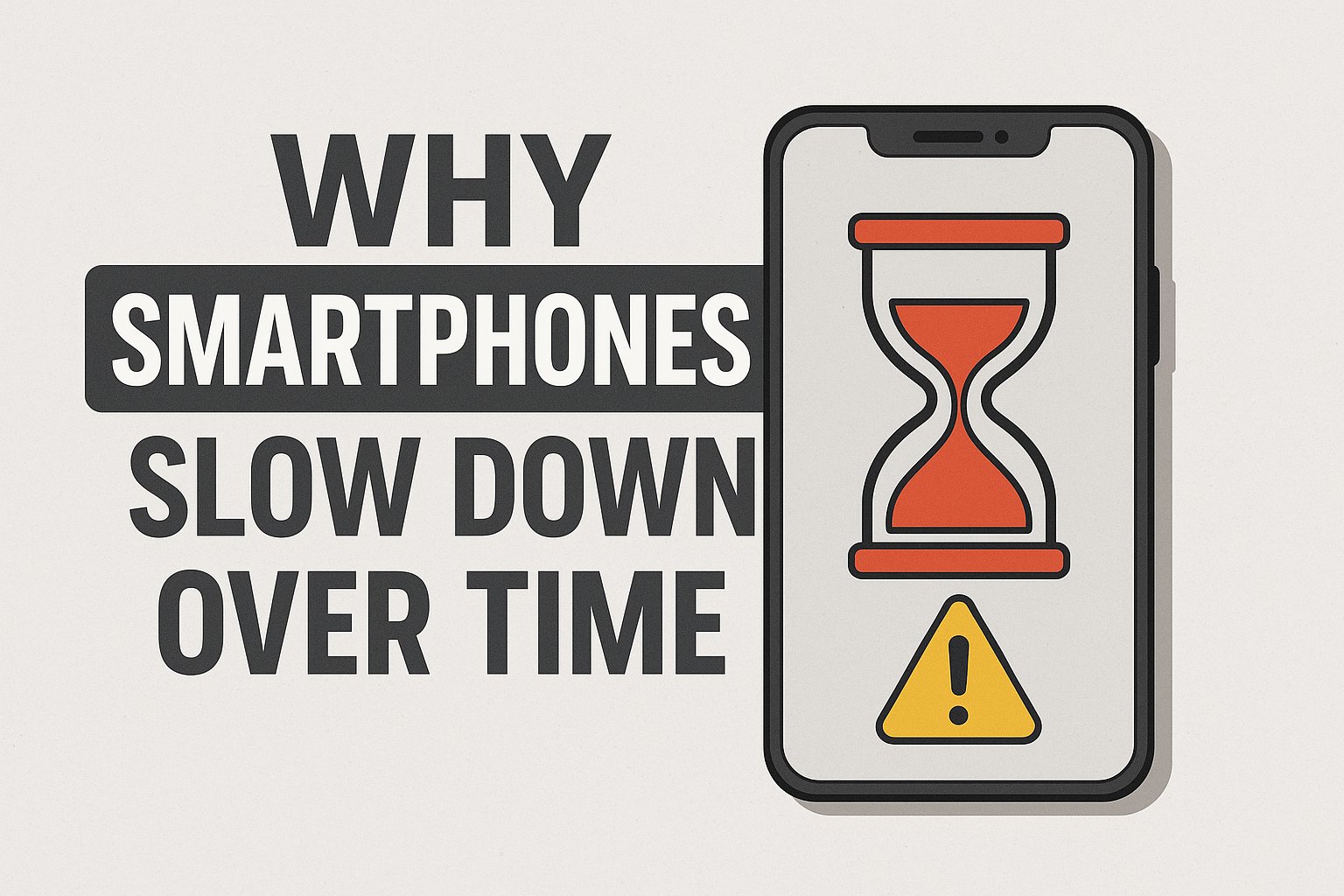Overview
It’s a familiar frustration for most smartphone users: when new, your phone is blazing fast—apps open instantly, everything is responsive. But over months or years, it starts lagging, freezing, or crashing without warning. And sometimes, it happens even if you barely use the phone or keep it in pristine condition.
If you’ve ever wondered why your smartphone slows down, you’re not alone. It’s not just about wear and tear. There are multiple underlying reasons—some technical, others intentional—contributing to this decline in performance.
1. Software Updates Aren’t Always Optimized for Older Devices
One of the most common reasons a smartphone slows down is due to major software updates. Manufacturers regularly roll out new versions of Android or iOS to improve features, security, and compatibility. However, these updates are primarily optimized for newer hardware.
Older phones with limited RAM, outdated chipsets, or slower storage systems often struggle to handle these updates smoothly. Even minor background improvements can strain older processors, leading to noticeable slowdowns in app loading, UI transitions, and multitasking.
2. Background Processes and Bloatware Accumulate
Over time, smartphones accumulate a variety of background processes. Even if you uninstall most third-party apps, system apps and pre-installed software (often referred to as bloatware) continue to run in the background. These hidden processes consume memory and CPU power silently.
As your device ages, its ability to handle simultaneous processes deteriorates. This leads to a condition known as resource fragmentation, where even simple actions feel sluggish. So, if your smartphone slows down, background activity may be silently draining performance.
3. Storage Gets Filled and Slows Read/Write Speeds
Storage is another significant culprit. Even if you’re not actively adding new data, your system cache, app updates, browser history, and media files pile up. As storage fills up, the phone’s ability to read and write data quickly is hampered.
Modern phones use NAND flash memory, which becomes slower as it gets closer to full capacity. Experts recommend keeping at least 15–20% of storage free to maintain performance. If your phone has less than that, it’s no surprise your smartphone slows down.
4. Battery Health Affects Processor Speed
Battery degradation plays a hidden but critical role. Lithium-ion batteries wear out with each charge cycle. As they degrade, they can’t deliver peak power output. To prevent random shutdowns, smartphone makers (notably Apple) have implemented dynamic throttling, which slows down CPU speed on devices with poor battery health.
That means, even if your battery still “works,” a weak battery can force your phone to reduce performance significantly—another reason why a smartphone slows down even when it’s idle or barely used.
5. Thermal Aging of Components
Like any electronic device, smartphones generate heat during operation. Even with advanced thermal management systems, prolonged exposure to heat causes gradual degradation of internal components—especially the CPU, GPU, and internal wiring.
Over time, this process (called electromigration) affects how efficiently current flows through the circuits, impacting speed and responsiveness. This form of aging happens silently, regardless of usage, contributing to why your smartphone slows down even when you think you’re treating it gently.
6. App Bloat and Increased Demands
Modern apps are becoming more feature-heavy and resource-intensive. Developers optimize newer versions for the latest flagship devices, often disregarding performance constraints of older phones.
So even if you’re using the same app as before, newer updates may be heavier, use more memory, and depend on newer APIs. This means your phone, which once ran Instagram or Google Maps smoothly, now struggles—even if you haven’t changed anything.
7. Planned Obsolescence: Myth or Reality?
There’s an ongoing debate around planned obsolescence—the theory that manufacturers intentionally slow down devices to encourage upgrades. While some brands deny the claim, investigations (such as the one against Apple in 2017) proved that software throttling was being used on older iPhones.
While not always malicious, such mechanisms are real. They are often framed as battery preservation tactics, but the result is the same—your smartphone slows down, nudging you toward buying a new one.
8. Security Protocols Get Heavier
Security features have improved significantly in recent years. Biometric encryption, secure storage, real-time threat detection, and permission management systems are now embedded deep into smartphone OS environments.
Though they offer greater protection, these features consume valuable system resources, especially in older models. This increased processing overhead is another factor behind why your smartphone slows down quietly over time.
How to Slow the Slowdown
While you can’t entirely stop the aging process, here are a few things you can do to mitigate the slowdown:
-
Factory reset once a year to clean out deep clutter
-
Replace the battery if degradation crosses 20%
-
Disable background app refresh
-
Clear system cache regularly
-
Uninstall apps you no longer use
-
Avoid installing unnecessary updates on older phones
The reasons your smartphone slows down over time are multi-faceted—ranging from software optimization issues to hardware degradation and increasing app complexity. While some slowdown is inevitable, being aware of the underlying causes allows you to make smarter choices. Regular maintenance, storage management, and battery health checks can keep your phone running efficiently for much longer.
ALSO READ: iPhone 17 Price in India and Pre-Order Guide: Everything You Need to Know

1 thought on “Why Your Smartphone Slows Down Over Time, Even If You Barely Use It (2025)”